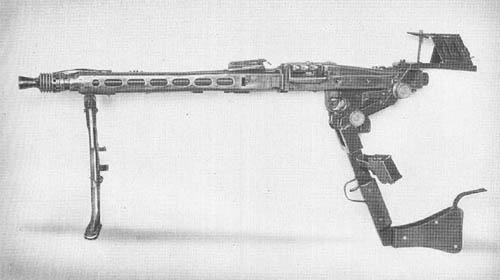Illustation of the typical arrangement of guns on a WWII battleship, cruiser, and destroyer from Naval Ordnance and Gunnery, NAVPERS 16116, Bureau of Naval Personnel, Training Division, May, 1944:
Illustation of the typical arrangement of guns on a WWII battleship, cruiser, and destroyer from Naval Ordnance and Gunnery, NAVPERS 16116, Bureau of Naval Personnel, Training Division, May, 1944:
German Luftwaffe Uniforms of WWII:
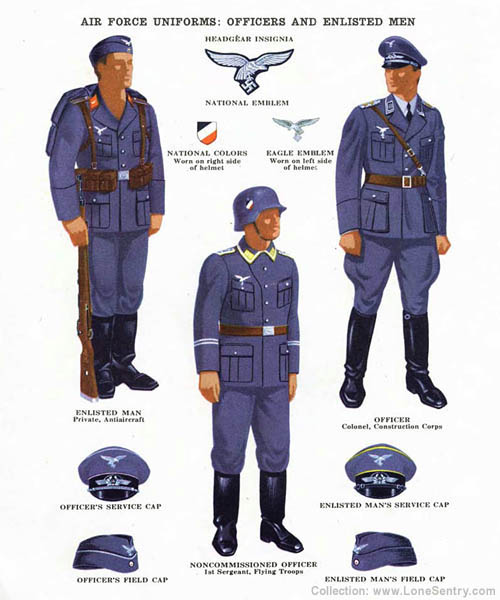
Air Force Uniforms: Officers and Enlisted Men
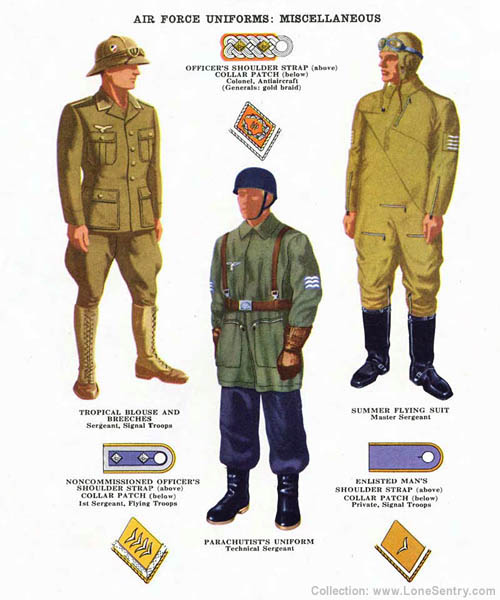
Air Force Uniforms: Miscellaneous
Source: TM-E 30-451: Handbook on German Military Forces, U.S. War Department, 1943.
Illustrations of the Grumman Ball Turret 150SE-1 and 150SE-2 mounted in the TBF Avenger from Aircrewman’s Gunnery Manual, Aviation Training Division, Office of the Chief of Naval Operations, U.S. Navy, 1944.
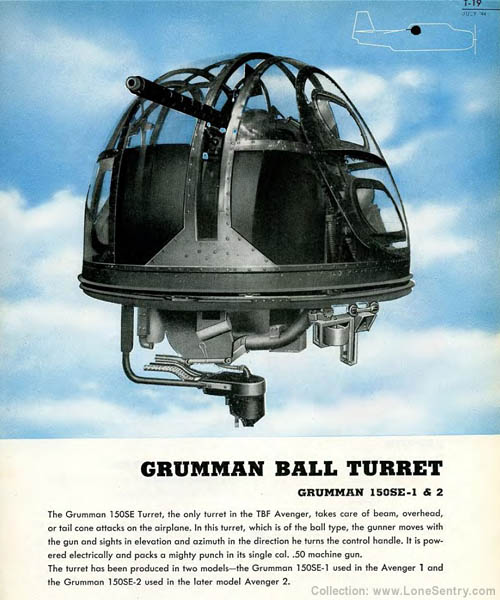
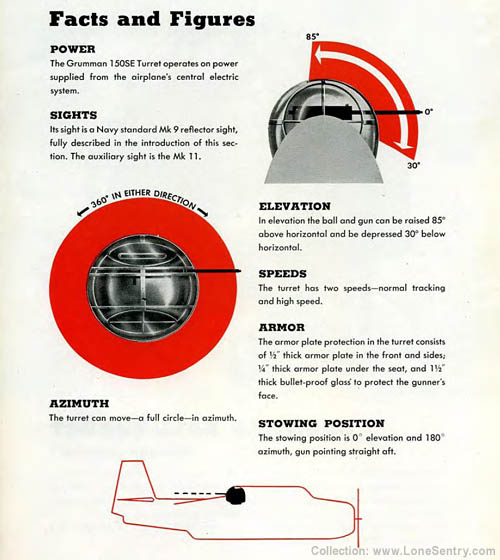
Two photographs of an unknown group of USO performers in the ETO during WWII from the website collection.
USO Performers:
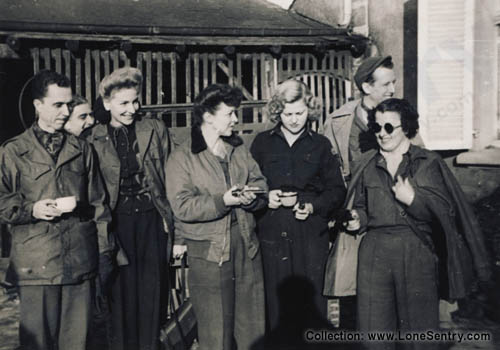
© LoneSentry.com Collection
Jeep with Front Armored Shield:
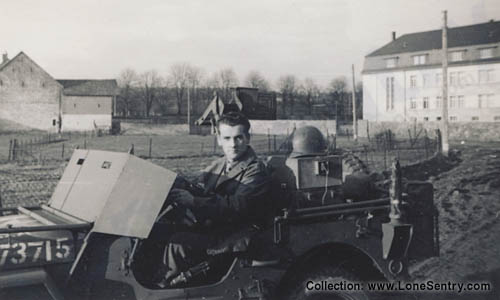
© LoneSentry.com Collection
Source: LoneSentry.com Collection.
Bronco Models has announced a new 1/35th scale kit of the German 7.62 cm Pak 36(r) antitank gun which was based on modified Russian guns captured in large quantities by the Germans.
CB35056 1/35 German 7.62 cm Pak 36(r) Anti-tank Gun:
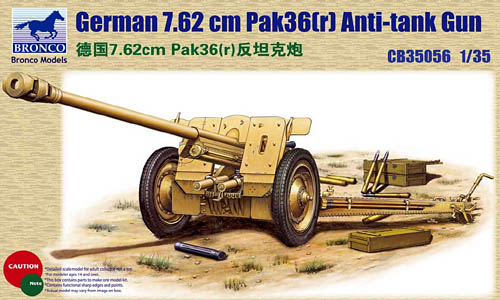
From the Catalog of Enemy Ordnance, U.S. Office of Chief of Ordnance, 1945:
7.62 cm Pak 36 (r): Antitank Gun (Ex-Russian)
The original 7.62 cm Pak 36, a Russian weapon, was captured by the Nazis and modified to increase the velocity. The built-up tube was rebored to seat a longer cartridge case, and a two-baffled muzzle brake added to cut down recoil energy. The breech mechanism is of the vertical sliding type, and the firing mechanism of the continuous pull type. The breech ring has been bored to seat a safety lock which holds the firing mechanism in a safe or firing position. A firing lever attached to the left side of the cradle enables the gunner to traverse as well as fire the piece. The elevating handwheel is generally situated on the right side of the cradle. Two puller type equilibrators located under the front of the cradle and attached to the rear by chains compensate for muzzle preponderance.
B-25 Mitchell “Hardships 2nd” photographed at Clark Field in the Philippines near the end of WWII. Hardships’ nose art features the mascots of all four squadrons of the 38th BG: the 71st, 405th, 822nd, and 823rd.
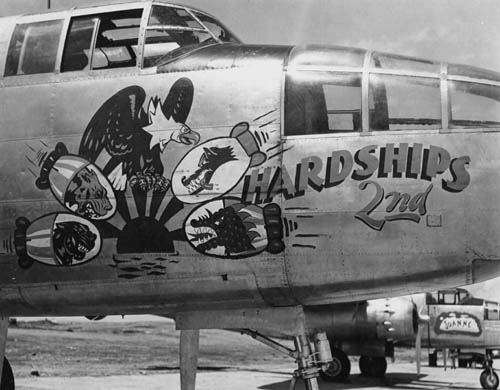
U.S. Air Force Photo
Several of the new WWII scale model kits from Dragon and Cyberhobby announced at the 2010 Tokyo Hobby Show:
New October release from Verlinden: 1/35th German Tank Riders Figures #2624. The Verlinden set contains two resin figures of WW2 German soldiers posed to ride on a panzer. Both figures are dressed in camouflage smock over field gray fatigues with camouflage covered helmet. One figure is armed with the Kar 98 rifle and the other carries a Panzerfaust antitank weapon.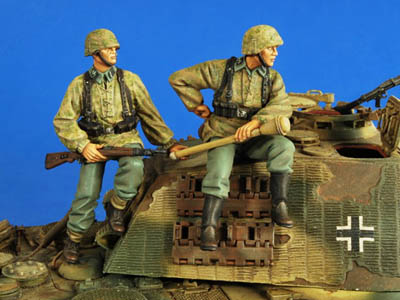
The following intelligence report on an unusual German remote-controlled machine-gun position encountered by U.S. troops in Normandy was published in the Intelligence Bulletin, Vol. III, No. 4, December 1944.
GERMAN MACHINE-GUN TRICK
A U.S. staff sergeant, who served as an observer for a mortar section in the Normandy campaign, reports an unusual German method of firing a machine gun by remote control. Although this method has not been reported by other U.S. soldiers, and although no concrete evidence as to its effectiveness can be presented, the idea is noted here for what it may be worth as a sample of the German soldier’s ingenuity.
German Machine-gun Trick. A close-up of the machine gun, with, its pulleys. Riflemen-observers whistle signals to the gunner, to indicate Allied approach via point A. The gunner zeroes knot A, which trains the muzzle on point A. The cord arrangement for firing is not shown here.
The sergeant tells of inspecting a captured German machine-gun emplacement, which had been prepared in the highly novel manner illustrated in the figure. A rope had been attached to the butt end of the gun. This rope ran through pulleys set up on each side of the rear of the gun, so that movement of the rope would aim the gun in any lateral direction. The gun then was zeroed at certain positions in the field of fire, and these positions were marked by knots in the rope. Thus the gunner could aim the gun, and, by moving the rope back and forth, spray an area with bullets from a position out of the line of fire when the gun was attacked. The gun was fired by a trigger-and-cord arrangement not shown in the original field sketches.
The German machine-gun crew consisted of a gunner and two or three riflemen who served as observers and who reported to the gunner the particular point on the which the gun should be trained.
This machine-gun position appears impractical at best, and may be an incorrect report. The Germans however did produce a special periscopic aiming and firing apparatus for the MG34 and MG42 machine guns. U.S. ordnance reported on this device as the “Deckungszielgerät für le. 34 u. 42 Dezetgerät: Undercover Aiming and Firing Apparatus.”
